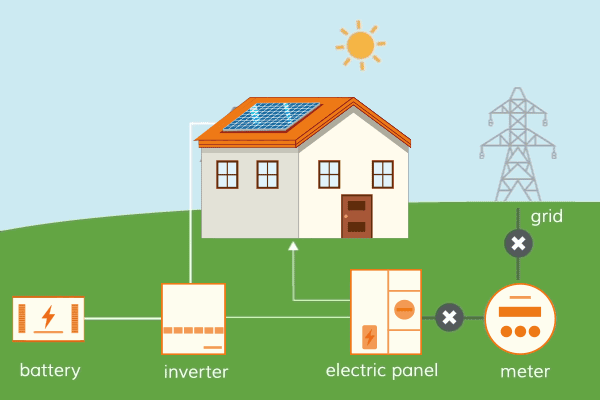How does battery storage tech work?
Battery storage technology is an essential component in many renewable energy systems, and in helping off-grid properties to use electricity. Increasingly, with the reduction in size and price of the technology, so battery storage is used in domestic systems too. The principle is the same as the battery you’ll find in your phone or your laptop; the battery is charged up and stores power, which can then be used at another time.
Battery tech is an especially important way of making solar power more widely usable, as by storing solar energy in a battery, it can be used at any time of day – not just when the sun is shining. Batteries can also be used in commercial environments, perhaps as emergency backup power or for what’s known as “peak shaving,” where batteries storing solar energy can reduce the “demand charge” on a commercial electricity bill.
In a battery storage system, the key components are the power source, the battery itself, and what’s known as an inverter – this changes AC current to DC, and vice versa. The inverter is important for scenarios like solar panels that deliver power in DC current, which needs to be converted to AC before it can be used by other appliances – or sold back to the power grid.

The battery is likely to be either lithium-ion or a lead-acid battery; lithium-ion batteries are more powerful and efficient than lead-acid batteries, and last longer – but they cost more money. From a chemical perspective, the batteries in battery storage systems work just the same as regular lithium-ion or lead-acid batteries – but storage systems include a lot of extra technology to make the battery smarter than its smaller counterparts. That technology includes software that governs when and how much the battery charges or discharges, to take advantage of different energy tariffs, and sensors that monitor the temperature, charge, and condition of the battery. Battery storage systems will also include multiple storage units that provide a level of redundancy – if one unit fails, you don’t lose all your power, and that unit can be replaced without disrupting storage. The software will also report power usage to energy companies, which is important for ensuring accurate billing or measuring how much energy you are providing to the national grid, if you are doing so.
People also ask
Advances in both battery technology and the way solar panels integrate with the wider network have changed allowing the ability to store and use electrical energy stored by solar power.
Globally, in 2017 the renewable energy market was valued at $928 billion.
Sunlight is converted into electrical energy by photovoltaic (PV) cells. The PV cells consist of layers of semi conductive material designed to be either n type (negative) or p type (positive)...
Cable Portfolio
View our comprehensive range of power, data, control and instrumentation cables and accessories
Go